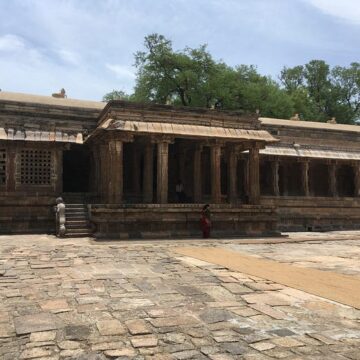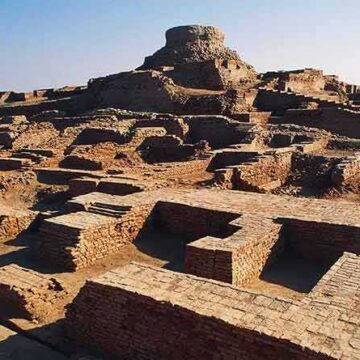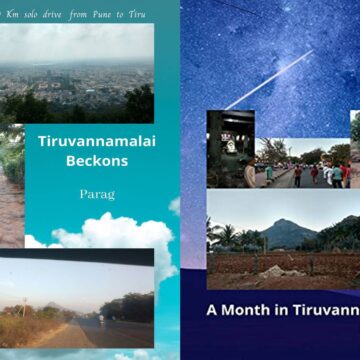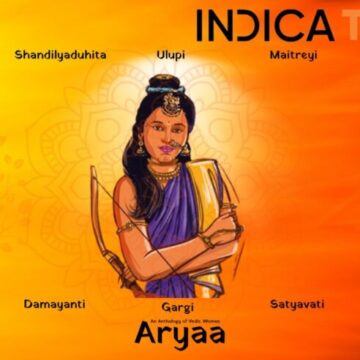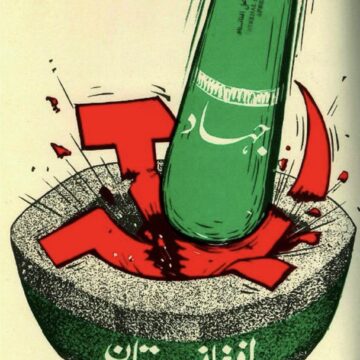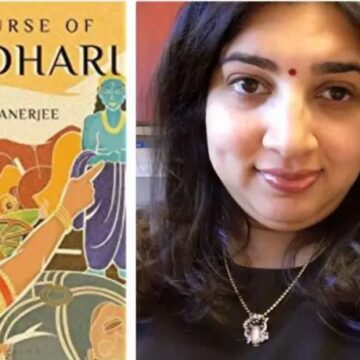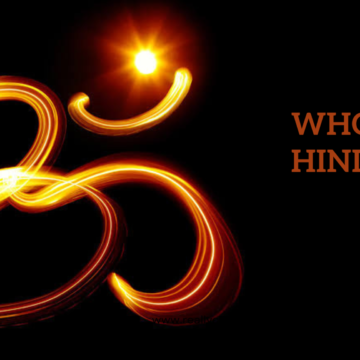Agrahāras have long been associated with the Hindu temple, popularly understood as residential housing schemes for brāhmaṇa families around the main temple. Popular narrative has sought to classify them as elitist brahminical dwellings designed to keep non-brāhmaṇas out. The notion, however, deviates from the reality - the primary right of the king over land is exercised by collecting a portion of produce as a ‘prime’ (agra) tax. When such tax revenue is gifted to a donee resulting in a ‘loss’ (hāra) to the state, it is called agrahāra. The lands gifted to brāhmaṇas are called brahmadéyas. These lands are typically agricultural lands that were already brought to revenue. Gifting of such lands has the effect of transferring the tax revenue therefrom to the donees. The brahmadéyas, are also not exclusively brahminical settlements.
Lakshmi Prasad J explores all this, and the importance and position of agrahāras in the ancient dharmik economy, in the first part of this series.
Year: <span>2023</span>
On Fortresses In The Rigveda, Atharvaveda Śaunakiya And (Pre)Harappa And The Dating Of The Samhitas – A. A. Semenenko – Translation
This paper was originally written in Russian by Dr. Aleksandr A. Semenenko, a historian based in Voronezh, Russia.
Dr. Semenenko is one of the few Western scholars who have defended the Out-of-India theory which purports to explain the spread of the Indo-European languages. His work is ground-breaking, because he relies not only on textual or linguistic proof, but also on archaeological and material evidence. His researches have now provided a very solid archaeological underpinning for the OIT.
Dr. Semenenko has recently presented summaries of his findings at Sangam Talks:
Steppe Route of Indo European Dispersal:Preliminary Findings (https://www.youtube.com/watch?v=lgRdwkZnGqA)
The Tarimian Trace of the Indo European Dispersal (https://www.youtube.com/watch?v=jyY7EHotXto)
The Rigveda Chronology And The Indo European Homeland (https://www.youtube.com/watch?v=S1Bsm79cVvk)
Dr. Semenenko's original and far-reaching work has been endorsed by such pioneers of the OIT such as Shrikant Talageri and Koenraad Elst: see for example, the Sangam Talk "Getting serious about the "Aryan" debate" (https://www.youtube.com/watch?v=rDSy9gPAB3s)
The bulk of Dr. Sememnenko's work is in Russian. However, he has also written extensively in English as well, and interested readers can find his path-breaking papers at:
https://independent.academia.edu/AlexandrSemenenko/Articles-in-English
or at:
https://www.researchgate.net/profile/Aleksandr-Semenenko-2
In this monograph, which is the first of his papers to be published in India, Dr. Semenenko shows that Rigvedic hymns mentioning forts being besieged or stormed do not occur in the oldest layers of the Rigveda. The oldest mentions of forts occur in a peaceful context. Dr. Semenenko also decisively refutes the AIT, according to which the earliest hymns should have described the destruction of forts. The author demonstrates that the description of fortresses in the Rigveda and the Atharvaveda reflect a unique chain of archaeological events in the history of South Asia — wherein a period when fortified settlements were besieged and burned down was followed by a period when they existed peacefully. This sequence of events corresponds to a transition from the Early Harappan period to that of Mature Harappa, and was never repeated again. With this insight, Dr. Semenenko has succeeded in establishing an absolute chronology for the Rigveda (which was hitherto not possible).
The translator dedicates his translation to the memory of his late lamented Russian teacher, Dr. Ganesh.V. Marathe. This translation was rendered possible only owing to Dr. Marathe's charity towards a schoolboy who could not have afforded to pay for the Russian lessons.
‘Tiruvannamalai Beckons’ and ‘A Month In Tiruvannamalai’ by Parag Shah – A Review
Rohan Raghav Sharma reviews two interconnected books, by the same author, on the same subject - 'Tiruvannamalai Beckons' and 'A Month In Tiruvannamalai'.
He critiques the writing style as well as the content and delves into the lore of the mystic mountain of Tiruvannamalai, in this well-penned piece.
Does Kantara depict women in bad light?
In this review of Kantara, Rohan Raghav Sharma tackles the allegations that the film depicts women in a poor light by analysing the actions of the key characters as well as scenes that may be interpreted as such.
‘Aryaa’ – An Anthology of Vedic Women – Review
"Stories ranging from the Warrior princess Chitraganda who fights alongside Arjuna to the bold princess Ulupi who approaches Arjuna for the union of her own accord to Queen Subhadra who finds a different way of carrying out her dharma and supporting her husband than the conventional way one expects a wife to. Characters etched in the minds of popular imagination such as Satyavati, Shakuntala, and the duo Nala-Damayanti are also presented in a narrative that cannot fail to entertain and arouse interest. The most metaphysical and philosophical stories are undoubtedly those of Gargi, the Brahmavadini, and Maitreyi, the scholarly wife of the famed Yajnavalkya. These stories prove that while there were women steeped in the Shastric worldview, they were not purposely debarred from aspiring towards education and a spiritual path."
In this review of 'Aryaa - An Anthology of Vedic Women' Rohan Raghav Sharma discusses the need for such a book before delving into each of the ten stories told in the book. He gives detailed insights into each story along with his critique of the writing styles of the different writers.
The Fate Of Muslims Under Soviet Rule : A Review
"Communism, as the logical outcome of materialism, cannot but be hostile to religion in all its aspects. Thus from the very beginning, the Communists aimed at the destruction of religious belief and worship in Soviet Russia."
Halley Kalyan pens a review of “The Fate Of Muslims Under Soviet Rule” - a booklet about Soviet government rule in regions that had a significant population of practicing Muslims, by Erich W Bethman (1958); and highlights the shared antagonism towards religion (Hinduism in particular in the Indian context) between the Communist dogma and the Indian version of Secularism.
André Malraux on India and Bangladesh – Part 2
In the second installment of André Malraux's views on India and Bangladesh, Dileep Karanth translates an open letter written by André Malraux to the president of the USA, Richard Nixon. In the letter André Malraux questions the stand taken by the newly emerged superpower that the USA was, towards India, Pakistan, and Bangladesh.
André Malraux on India and Bangladesh – Part 1
This is a translation of two web pages about the French writer André Malraux, and his views on India and Bangladesh.
Dileep Karanth brings to light the love and fascination that a misunderstood frenchman, André Malraux, had for India - not only the politically defined territories of India but also the civilisation; as his words to the students in Dacca prove.
The article attempts to understand the man and his ideologies and beliefs before delving into his love for India.
‘The Curse of Gandhari’ by Aditi Banerjee: A Review
Rohan Raghav Sharma reviews Aditi Banerjee's book titled: "The Curse of Gandhari"; and takes us on a journey through the plot, while analysing the construction of the narrative alongwith his understanding of the author's thoughts and approach.
Hindu, Hinduism, Hindudtva – Part 2
In the second part, Dr. Pingali Gopal discusses the evolution of political Hindutva after independence, and sheds light on the failure to define the basic terms as we struggle with the alleged rise of ‘Hindu fundamentalism'.

